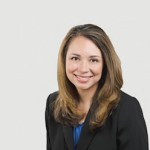If you’re not familiar with our mid-year Education Conference, it’s a smaller affair than the annual, 4,000-plus-attendee Convening Leaders program we hold every January. EduCon, as it’s affectionately known among our staff, draws about 500 attendees, and we see it as the perfect size to experiment with all kinds of things.
After many years of standard-format programming at EduCon — general sessions, refreshment breaks, luncheons, breakout sessions — this year we wanted to see what would happen if we intentionally disrupted the attendee’s typical conference experience. At EduCon 2014, held at the Metro Toronto Convention Centre this past June, we scheduled day one the way we always have, then shook it all up the next day by creating an open-space learning environment — which we hoped would provide a compare-and-contrast scenario, all the while showing our attendees something different in action.
Our program objectives were to demonstrate variations in conference format, engagement through mobile technology, and budget scalability. But it took us some time to really understand what it was that we were trying to accomplish. To do that, we enlisted the assistance of experts from the experience-marketing firm George P. Johnson. Together, we walked through a series of strategy exercises that eventually led to an experience map that helped shape our second-day of programming.
As a result of this experiment, we learned quite a few nuggets of information. Among them:
› Attendees are apprehensive about the unknown. There was skepticism and uncertainty about whether our new EduCon format would work. The only thing we could do was stress to attendees that the program design was an experiment, and that their feedback would help us craft a better experience.
› Sound is a problem in one big room. When you have all 500 attendees talking in one space, as we did in our open-space learning environment, it’s going to get loud. We didn’t use sound systems in some of our larger spaces because of the potential for sound “bleed-through” to neighboring areas. As a result, it was often tough to hear what was happening. But our attendees seemed bound and determined to lean in and listen.
› Strategy is key. One of the most important things I learned was that we as meeting planners need to think of ourselves as event strategists. What we do has meaning, with real business objectives and strategy behind it.
I’d like to thank all of our EduCon attendees who participated in our experiment. In the next few months, Convening Leaders 2015 planning will take center stage, and I know we’ll take everything we learned in Toronto and bring it to a new level in Chicago. I hope to see you there
